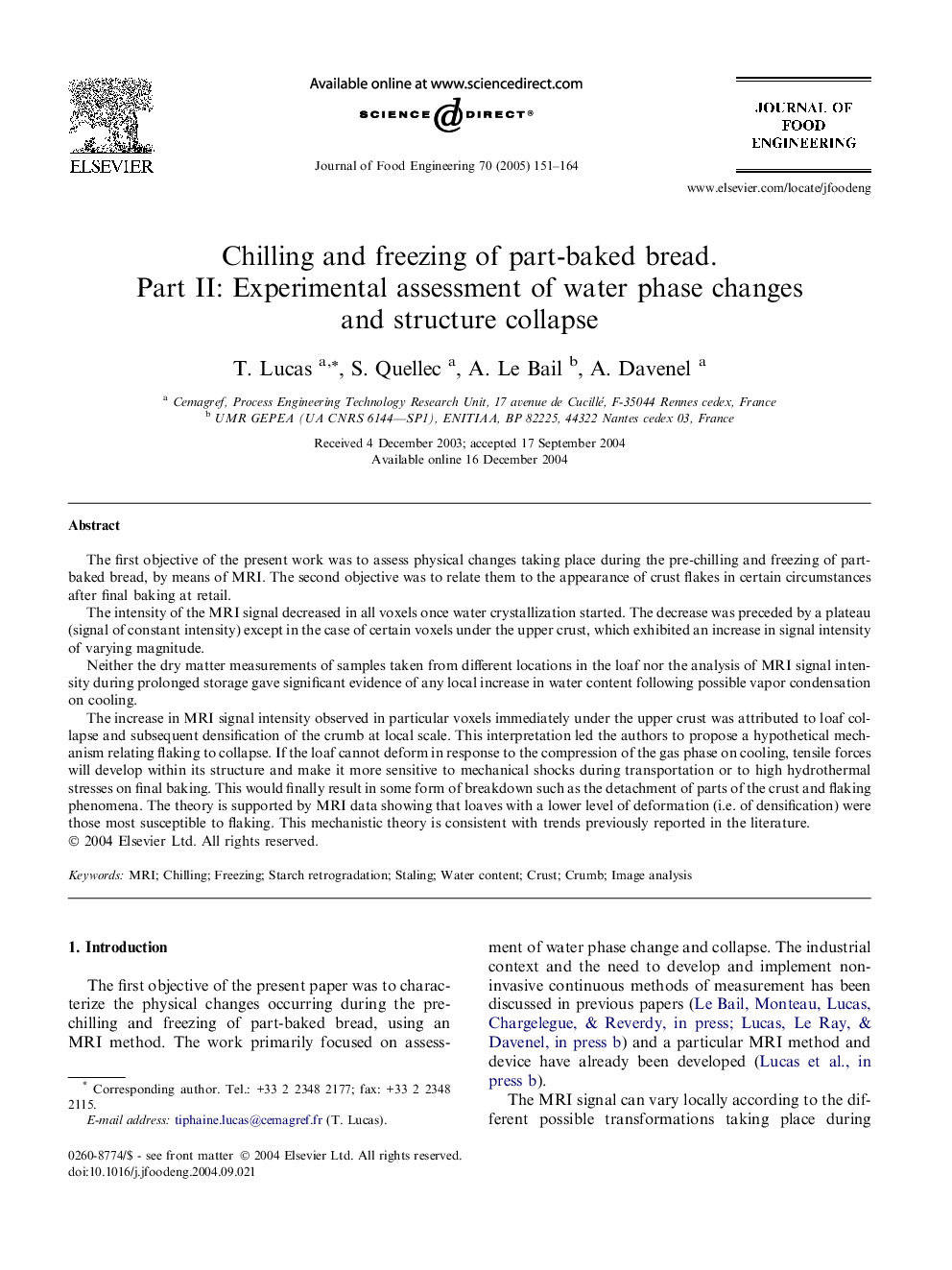| Article ID | Journal | Published Year | Pages | File Type |
|---|---|---|---|---|
| 10278581 | Journal of Food Engineering | 2005 | 14 Pages |
Abstract
The increase in MRI signal intensity observed in particular voxels immediately under the upper crust was attributed to loaf collapse and subsequent densification of the crumb at local scale. This interpretation led the authors to propose a hypothetical mechanism relating flaking to collapse. If the loaf cannot deform in response to the compression of the gas phase on cooling, tensile forces will develop within its structure and make it more sensitive to mechanical shocks during transportation or to high hydrothermal stresses on final baking. This would finally result in some form of breakdown such as the detachment of parts of the crust and flaking phenomena. The theory is supported by MRI data showing that loaves with a lower level of deformation (i.e. of densification) were those most susceptible to flaking. This mechanistic theory is consistent with trends previously reported in the literature.
Related Topics
Physical Sciences and Engineering
Chemical Engineering
Chemical Engineering (General)
Authors
T. Lucas, S. Quellec, A. Le Bail, A. Davenel,
